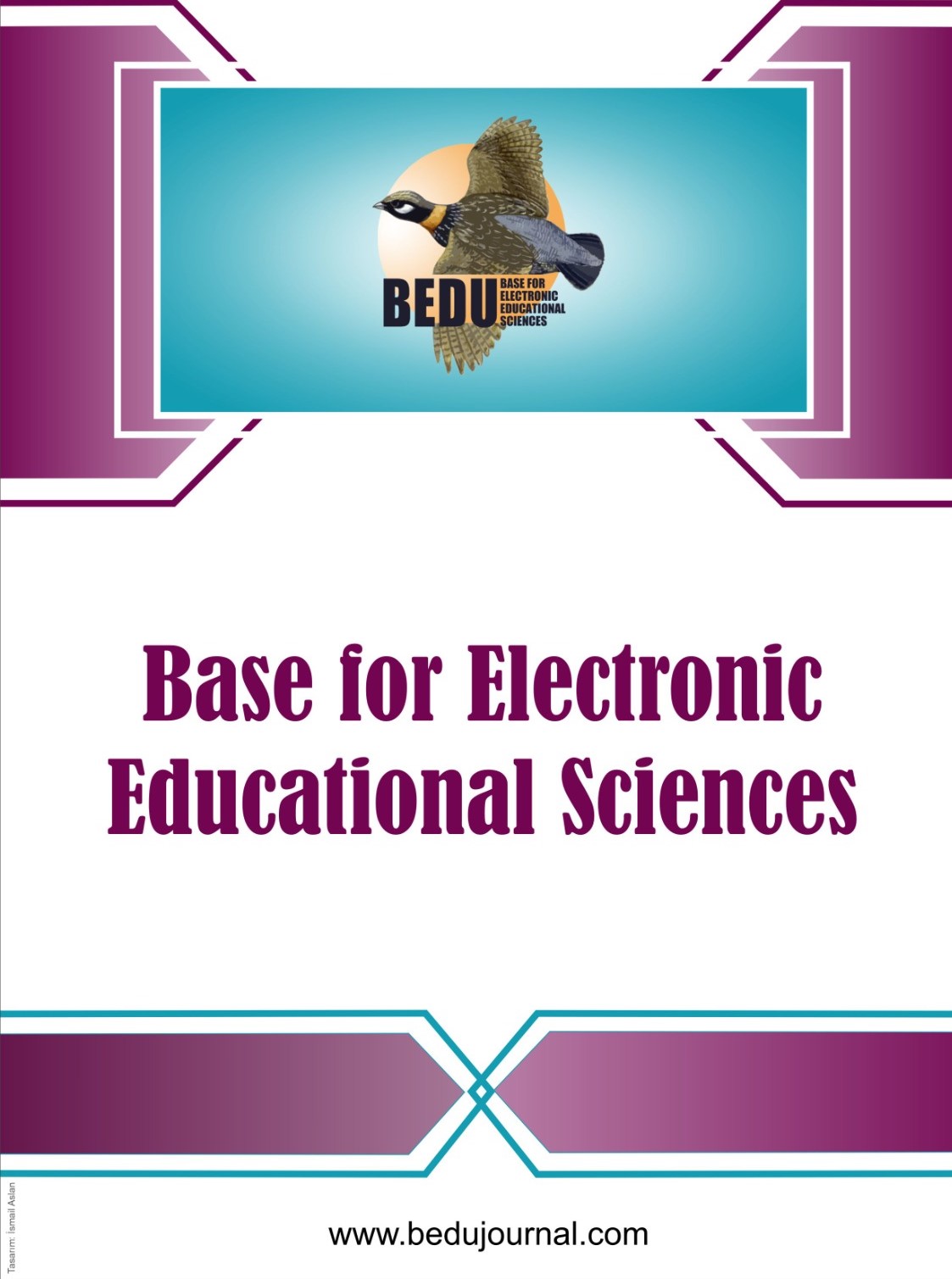Research article | Open Access
Base for Electronic Educational Sciences 2024, Vol. 5(2) 199-212
The Idioms in Aziz Nesin's Work 'Toros Canavari (The Monster of Taurus)' and Their Translation into Greek
pp. 199 - 212 | DOI: https://doi.org/10.29329/bedu.2024.1064.11
Publish Date: September 30, 2024 | Single/Total View: 91/143 | Single/Total Download: 142/160
Abstract
This article is about the translation of the phrasal units and idioms from Turkish into Greek in Aziz Nesin’s play Toros Canavarı (The Monster of Taurus). And specifically, the translation of the phrasal units which contain body parts is examined. How these special phrases of the source text are reflected in the target text and their comprehensibility by the target language readers and audience (in a play), are evaluated in the light of Mona Baker's translation strategies. This analysis was carried out by taking into account the written text (SL) of Aziz Nesin’s work Toros Canavarı and the translation of the same text «Το θεριό του Ταύρου» into Greek (TL) by Ermos Argaios. First of all, idioms containing body parts and special words (discourses) specific to Turkish culture were identified in the Source Text (ST), and then it was discussed to what extent they have equivalents in the Greek translation of the work (TT). According to scholars there are three different equivalences in languages belonging to different language families. These are classified as full equivalence, partial equivalence and zero equivalence Taking this entire translation framework into consideration, this paper tried to examine the translation of the idioms containing body parts into the target language (Greek), evaluating the equivalences at verbal and cultural level but also the losses that took place in the target text.
Keywords: Aziz Nesin, translation of phrasal units, translation strategies, Greek, body parts
APA 7th edition
Oglou, S.O. (2024). The Idioms in Aziz Nesin's Work 'Toros Canavari (The Monster of Taurus)' and Their Translation into Greek. Base for Electronic Educational Sciences, 5(2), 199-212. https://doi.org/10.29329/bedu.2024.1064.11
Harvard
Oglou, S. (2024). The Idioms in Aziz Nesin's Work 'Toros Canavari (The Monster of Taurus)' and Their Translation into Greek. Base for Electronic Educational Sciences, 5(2), pp. 199-212.
Chicago 16th edition
Oglou, Sipel Osman (2024). "The Idioms in Aziz Nesin's Work 'Toros Canavari (The Monster of Taurus)' and Their Translation into Greek". Base for Electronic Educational Sciences 5 (2):199-212. https://doi.org/10.29329/bedu.2024.1064.11
Aksan, D. (1996). Türkçenin Sözvarlığı. Ankara: Engin Yayınevi.
Aksoy, Ö. A. (1988). Atasözleri ve Deyimler Sözlüğü 2 –Deyimler Sözlüğü. İstanbul : İnkılâp Yayınevi.
Aktaş, A. (2008). Karşılaştırmalı Dilbilim Açısından Türkçe ve Almanca Deyimlerde Kadın. Eskişehir: Anadolu Üniversitesi, Eğitim Fakültesi Bildiri Kitabı.
Ayvaz, G. (2013). Söz Öbekleri, Deyimler ve Atasözleri’nin Çevirisive Çeviri Eylemine Etkisi. Sakarya ÜniversitesiFen Edebiyat Dergisi, S. 2, s.211-221.
Baker, M. (1992). In other words: A coursebook on translation. London and New York: Routledge.
Demirezen, M. (1991). Çeviride Kayıplar Sorunu. Hacettepe Üniversitesi Çeviribilim ve Uygulamaları Dergisi, S. 1, s.115 – 128.
Göktürk, A. (1994). Çeviri Dillerin Dili. İstanbul. İstanbul: Yapı Kredi Yayınları.
Nesin, A. (1965). Toros Canavarı (oyun). İstanbul: Yeni Matbaa
Newmark, P. (1988). A Textbook of Translation. New York: Prentice Hall.
Püsküllüoğlu, A. (1995). Türkçe Deyimler Sözlüğü. Ankara: Arkadaş Yayınevi.
Sinan, A.T. (2001). Türkçe'nin Deyim Varlığı. Malatya: Kubbealtı Yay.
Şahin, H. (2009). ‘Kaşgarlı’dan Günümüze Organ İsimleriyle Kurulmuş Deyimler’, Turkısh Studies, Volume 4/3 Spring, s.2020 -2036.
Şahin, H. (2004). Türkçede Organ İsimleriyle Kurulan Deyimler. Bursa: Uludağ Üniversitesi Yayınları.
Greek sources
Αργαίος, Ε. (1977). Το Θεριό του Ταύρου. Αθήνα: Εκδόσεις ΔΩΔΩΝΗ.
Σετάτος, Μ. (1994). Φρασεολογήματα και φρασεολογισμοί στην Κοινή Νεοελληνική. Γλωσσολογικές Μελέτες. Α.Π.Θ.
Συμεωνίδης, Χ. (2000). Εισαγωγή στην ελληνική φρασεολογία. Θεσσαλονίκη: Κώδικας.
Τριανταφυλλίδης, Μ. (1981) Νεοελληνική Γραμματική. Ιστορική Εισαγωγή. Άπαντα Μ. Τριανταφυλλίδη. (τομ. 3). Θεσσαλονίκη: ΑΠΘ & Ινστιτούτο Νεολελληνικών Σπουδών (Ίδρυμα Μ. Τριανταφυλλίδη).
Χιώτη, Α. (2010). Οι Παγιωμένες Εκφράσεις tης Νέας Ελληνικής: Ιστορική Διάσταση, Ταξινόμηση και Στερεοτυπικότητα. Διδακτορική διατριβή, Αριστοτέλειο Πανεπιστήμιο Θεσσαλονίκης (ΑΠΘ).
Websites
https://www.eens.org/EENS_congresses/2014/tresorukova_irina.pdf
(1) Yunancaya çevrilen Türk edebiyatına bir bakış- An overview of Turkish literature translated into Greek | Hasan Kaili - Academia.edu
